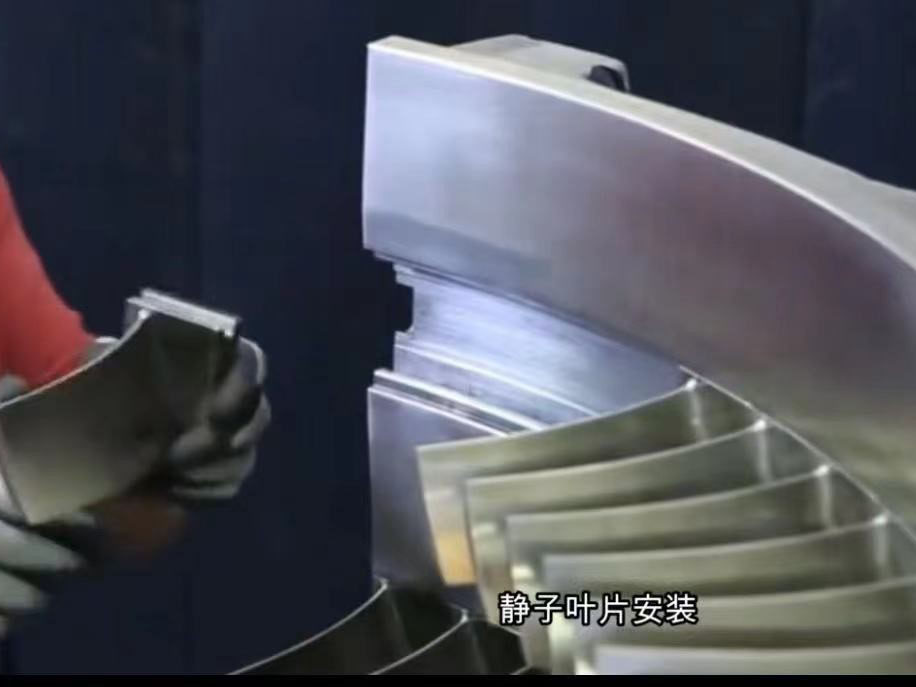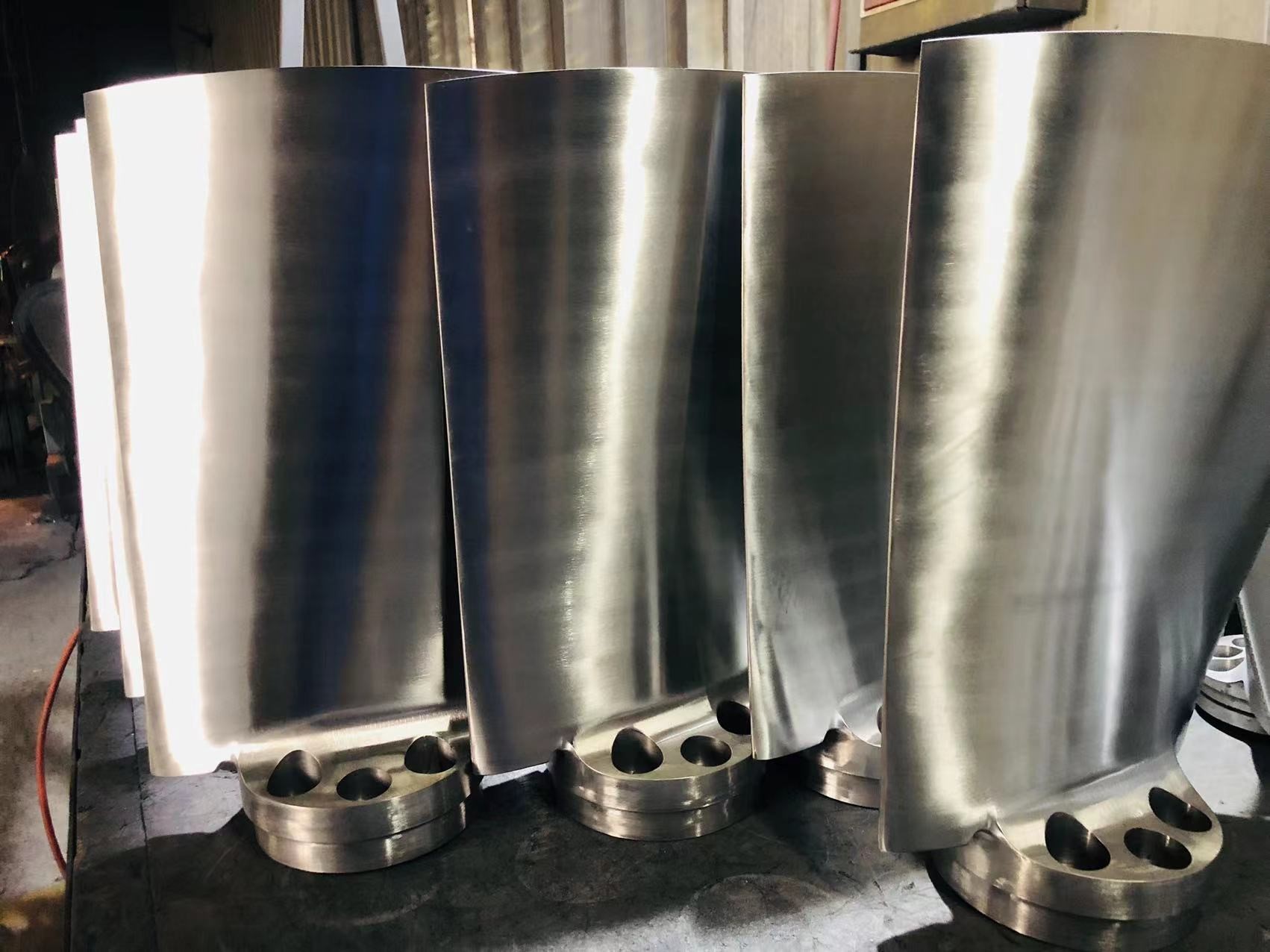Published by The Maritime Executive
Published by The Maritime Executive Boom Sprayer Nozzles

Published by The Maritime Executive
Published Nov 13, 2022 2:08 PM by Harry Valentine
During the 1980’s, University of Michigan professor of business Dr. C. K. Prahalad’s treatise entitled “Competing for the Future” focused on “the convergence of technologies.” There is potential to combine recent technical developments to advance maritime wind propulsion, and technology from Sweden, Japan, the USA, Germany and in the UK offers such a possibility.
During the early 1980’s, physics professor Brad Blackford entered a windmill powered boat in a competition for wind-powered sail boats at Halifax, Canada. He sailed his boat directly into a headwind and won the race, using an angled axial-flow wind turbine that directly drove a small boat propeller. During later years, Blackford improved on the concept and achieved a speed of eight knots while sailing directly into a headwind. He sailed his wind turbine boat along the east coast of the United States in winds of moderate speed, the wind turbine and propeller having over-speed and cavitation limitations.
High Efficiency at Low Speed
Several inventors have experimented with flukes to increase low-speed propulsive efficiency of small boats. A Swedish manufacturer named “Dol-prop” markets such a product which is based on the tail fin of a dolphin. Enthusiasts have developed both vertical and horizontal mechanical tail fins to achieve higher efficiency propulsion. The demonstration of the technology on small boats suggests potential to develop large-scale versions of mechanical tail fin propulsion technology, potentially driven by vertical-axis typhoon capable wind turbine technology using the Magnus effect, that originated from Japan.
The cylindrical Magnus-effect vertical-axis rotors of the typhoon turbine capable of spinning at extreme rotational speeds while exerting force of a lever to drive a central drive shaft that carries extremely high torque at relatively low RPM. An ideal future concept would combine the power characteristics of such a turbine with a large-scale mechanical fin capable of propelling a large vessel sailing westbound across the North Atlantic into severe headwinds that occur during the latter part of each year. An alternative layout would use one of two competing designs of well-proven vertical-axis propulsion technologies.
While vertical-axis turbines convert energy less efficiently than horizontal-axis turbines, they can be built with a lower center-of-gravity, which offers stability advantages in mobile application. The recent innovation of installing Magnus-effect rotors to vertical-axis wind turbine design allows for operation in extreme high-speed wind conditions. Such rotors are currently being manufactured for the maritime sector as an alternative to sails. There is scope to adapt the same rotors on deck-mounted, large-scale vertical-axis turbines, with potential to operate upper and lower group of rotors on the same assembly.
The combination of removable railway-type wheels riding on a curved rail would carry the weight of the rotating turbine assembly, with each rotor equipped with a brake and an electric or air-pressure starter motor along with the trailing fin concept that Challenergy pioneered in Japan. Magnus-effect vertical-axis wind turbine technology promises to resolve operational problems of earlier vertical-axis wind turbine designs in extreme wind speeds. The lower centre-of-gravity allows for larger scale construction than horizontal-axis tower-mounted wind turbines intended for maritime propulsion.
The wind turbine industry has focused on developing horizontal-axis turbines mounted on towers to generate electric power for the utility grid, with the largest three-bladed offshore turbines rated at 14 MW (18,700 horsepower) using blades of 354 feet in diameter. Such a power level is the result of many successive years of ongoing research and development, with a hurricane capable version of the technology having now been developed. Horizontal-axis wind turbines on towers have been used for small-boat propulsion using a mechanical gear transmission.
A wind turbine rated at 500 kW (670 horsepower) in a wind speed of 30 mph and spinning at 240 RPM would deliver almost 15,000 lb-ft of torque. A planetary gearbox could increase rotational speed to 2,400 RPM at 1,500 lb-ft of torque to be transmitted through 90-degree spiral bevel gears and concentric counter-rotating vertical shafts.
The development of typhoon capable vertical-axis wind turbine technology in Japan provides opportunity to undertake further research into developing a practical and competitive multi-megawatt, mega-scale version capable of providing maritime propulsion. Vertical-axis technology allows the turbine to directly drive vertical-axis propulsion technology, with the option of planetary gears to adjust relative rotational speeds or to use crank and connecting rod technology to drive large-scale mechanical tail fin propulsion technology. The central shaft of a two-level mega-scale typhoon turbine rotating at 90 RPM carrying 250,000 lb-ft of torque would deliver just over 4,300 horsepower or 3,200kW to a vertical-axis propeller.
The vertical-axis Voith-Schneider propulsion technology is well proven in tugboat applications and could be driven by a vertical-axis wind turbine. Adjusting the vertical blade angle to the neutral zero-thrust setting would allow for operation of a wind turbine with negligible starting torque. While extending the height of the propulsion blades would increase maximum propulsive thrust, such a modification would increase bending loads on the blades. There may be need to undertake research into the merit of using both upper and lower-level disc plates to secure each vertical propulsion blades at both ends on a mega-scale version.
It is possible for vertical-axis wind turbine technology to drive the Voith-Schneider using either direct gearless drive or by installing a vertical-axis planetary gear system between the wind turbine and the propulsion unit. The thruster blades include pivots and related technology that require regular inspection and maintenance. A competing axial-flow propeller that operates vertically would require less frequent inspection and maintenance due to the absence of pivots and related technology. A wind-turbine powered vessel assigned to trans-ocean sailing would require a high level of long-term reliability along with ease of inspection and maintenance of the power and propulsion system.
A British company offers a vertical-axis axial-flow propeller installed inside a duct that includes steerable capability. While a self-starting vertical-axis wind turbine could directly drive a vertical-axis propeller, there would likely be need to install overdrive gearing between a slow-turning wind turbine and fast turning propeller. Planetary gear systems based on the combination of ring gears and multiple parallel planet gears would capable of enduring sustained high torque loads at low rotational speed. A vertical axis propeller built to excess diameter with variable pitch blades would operate at high efficiency at comparatively low RPM.
Downstream of the propeller, a horizontal section of rectangular duct with variable cross-sectional outlet would allow for adjustment of sailing speed. An array of multiple deck-mounted vertical-axis turbines that each drive a vertical 3-throw crankshaft may be linked to each other by tension cables and drive a single vertical-axis propeller. Each vertical-axis turbine may alternatively drive its own vertical-axis propeller with a duct that combines with other ducts at the vessel’s stern. Variable-pitch blades would adjust to a range of power output and regulate wind turbine speed while sailing over extended distances in powerful wind conditions.
A vertical-axis turbine would drive a vertical crank shaft with two throws spaced 180-degrees apart. The crank shaft would drive a pair of connecting rods attached to the activation levers of a pair of parallel spring-loaded vertical mechanical tail fins. The forward end of each lever would attach to vertical-axis rudder-type pivot shafts secured to the vessel hull. Each connecting rod would attach to each lever at a vertical-axis pivot located between the tail fin and the rudder type shaft. During operation, the tail fins would move cyclically in opposite directions to provide propulsion.
A future large-scale version of the parallel tail fin concept would likely replace the spring-loaded system with the combination of forward and rear vertical-axis crank shafts set 90-degrees apart. A forward set of upper and lower connecting rods would attach to the tail fin’s leading area while trailing connecting rods would attach to the tail fin’s trailing area. Installing the mechanical tail fins inside a rectangular duct with variable area outlet would likely improve propulsive efficiency while ability to adjust sailing speed. A mechanical linkage would connect the vertical-axis turbine(s) to the propulsion system.
Over the past decade, typhoon/hurricane capable wind turbines have been developed in both horizontal-axis and vertical-axis configurations. When combined with related developments in mechanical tail fin propulsion and vertical-axis axial-flow propellers, these technologies offer new prospects in tall wind-powered vessels that would be restricted to sailing routes and ports with unlimited vertical height clearance. A future mega-scale Magnus-effect vertical-axis wind turbine could directly drive a vertical-axis axial-flow propeller with variable-pitch blades.
The opinions expressed herein are the author's and not necessarily those of The Maritime Executive.
Published Nov 13, 2022 8:40 PM by The Maritime Executive
Every superintendent of the U.S. Merchant Marine Academy receives the honorary title of "admiral" upon taking office, but the latest appointee is already equipped. Rear Admiral Joanna Nunan, a retired U.S. Coast Guard two-star, is the academy's first female director and the first in many years with a background in HR and academic administration - critical skillsets for the academy's reform agenda. “Rear Admiral Nunan is uniquely prepared to lead and strengthen USMMA on every front,” said Maritime Administrator Ann...
Published Nov 13, 2022 6:48 PM by The Maritime Executive
Last week, India and France conducted joint surveillance and mapping of the southwest Indian Ocean, the latest instance of growing cooperation between the two powers in maritime affairs. An Indian Navy Boeing P-8 patrol aircraft arrived in Reunion - a French Overseas territory in the Indian Ocean - on November 8. It would team up with a French Navy Falcon 50 maritime aircraft for the surveillance over the waters of Mozambique Channel, Mauritius and Reunion. This year has seen an...
Published Nov 13, 2022 5:44 PM by The Maritime Executive
After Russia’s war in Ukraine disrupted the global energy market, especially in Europe, new energy suppliers have steadily emerged to plug the demand gap. Particularly, African nations rich with hydrocarbons have seen intensified interest in their gas fields. On Sunday, Mozambique flagged off its first shipment of LNG destined to Europe. This was a historic moment for the country, ending a decade-long wait to monetize Africa’s largest offshore gas fields. The first shipment was sourced from the Coral Sul floating...
Published Nov 13, 2022 4:26 PM by Tony Munoz
Let’s start with a little history. The Laborde name is synonymous with the offshore industry, which was practically invented by your father – a titan in the industry – and your uncle when they founded Tidewater 60+ years ago. What was it like growing up in such an environment? Growing up, I didn’t really understand the impact my dad, John P. Laborde, and uncle, Alden “Doc” Laborde, had on the offshore industry. It wasn’t until I was 18, the...

Nozzle © Copyright 2022 The Maritime Executive, LLC. All rights reserved.